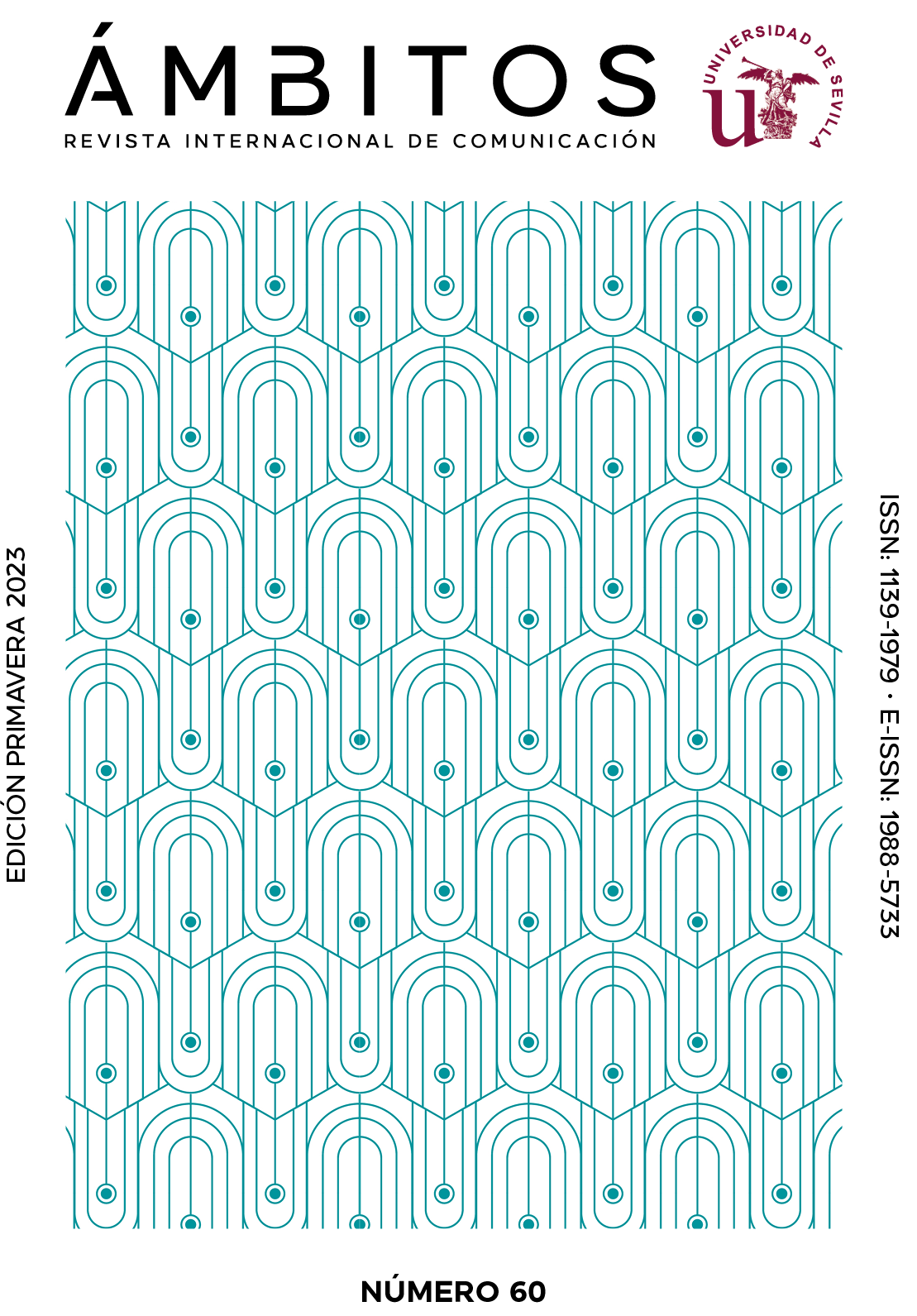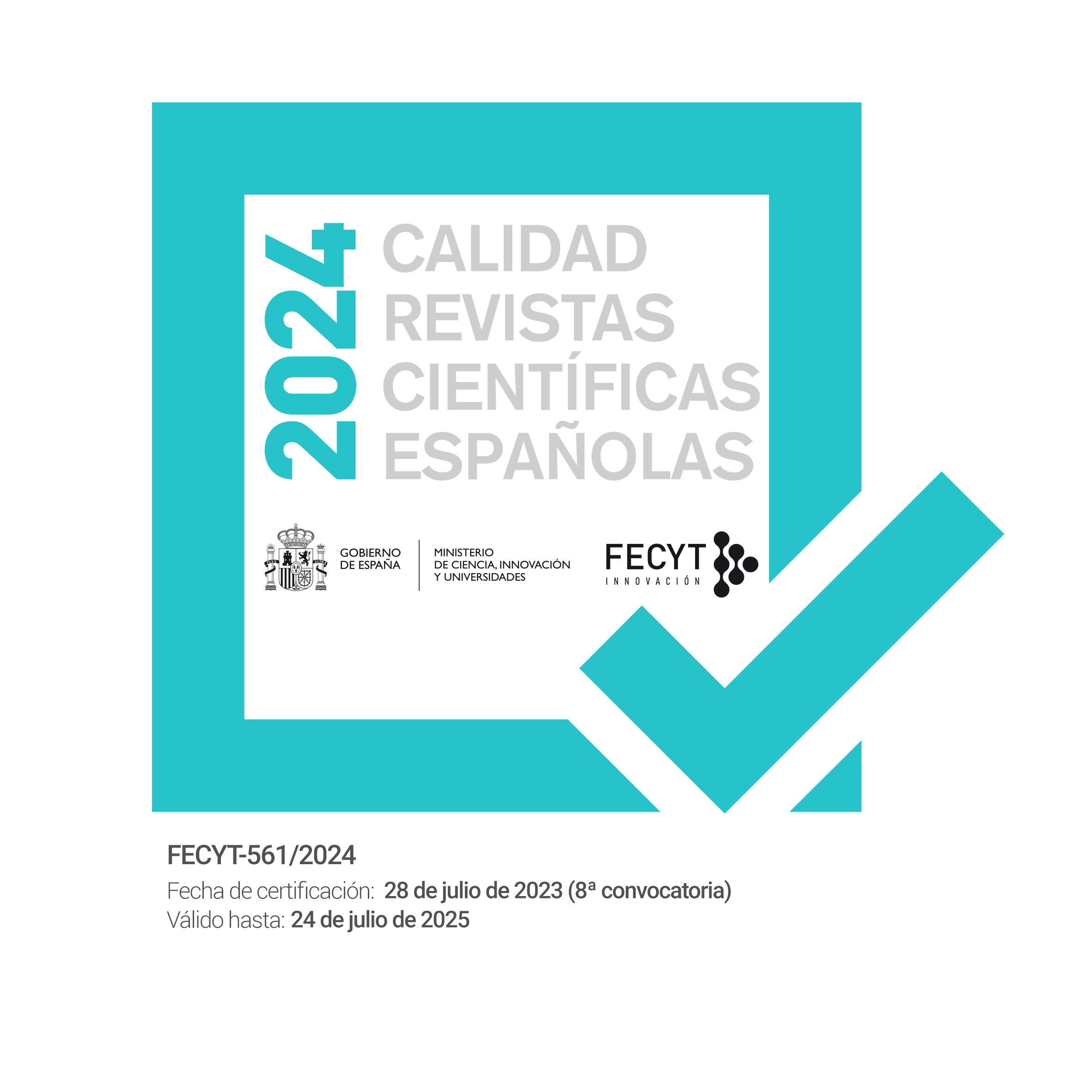Instagram and political marketing. Vox Party election campaign 2019
DOI:
https://doi.org/10.12795/Ambitos.2023.i60.05Keywords:
elections campaign, General Elections 2019, Instagram, political marketing, VoxAbstract
The use of social networks for political communication purposes has become widespread in recent years, in parallel with the growing presence of these networks in our lives. In this study we are going to focus on the use Vox has made of social networks to get closer to voters and get the largest number of followers of all the parties that are involved in the national electoral panorama of the year 2019. The specific network used by Vox for his political marketing has been Instagram. Instagram is a social network with great implantation among certain sectors of the population, especially among young people of voting age, and there are more and more studies being done on its use in political communication. In this work we seek to find some of the keys that explain how the use of this network by Vox, a party until then with very little presence in public life, contributed to this political actor breaking into the Spanish scene with force, being the party with the most followers on Instagram during the two electoral campaigns of 2019. We examine the characteristics of Vox messages on Instagram during the two electoral processes for the Spanish Parliament of 2019, comparing both campaigns. The study of this case, applying content analysis to its messages, allows us to observe that Vox has been able to generate its own agenda without hardly having a presence in the conventional media. The publications show a clear intention of personalizing the party and showing a position of equality before the citizen. The messages seek to give them a feeling of closeness. In the second campaign, progress in the professionalization of the communication department is noted, after increasing its budget by obtaining political representation, making more publications, of higher quality and with more post-production.
Downloads
References
Aguilera, M. de y Casero-Ripollés, A. (2018). ¿Tecnologías para la transformación? Los medios sociales ante el cambio político y social. Revista ICONO 14. Revista Científica De Comunicación Y Tecnologías Emergentes, 16(1), 1-21.
https://doi.org/10.7195/ri14.v16i1.1162
Ballesteros-Herencia, C. A. (2022). La volátil consistencia del compromiso digital: Engagement en campaña electoral con las redes sociales de los partidos emergentes. Ámbitos. Revista Internacional De Comunicación, 57, 192-210.
https://doi.org/10.12795/Ambitos.2022.i57.11
Bardin, L. (1977). L’analyse de contenu. Presses Universitaires de Paris.
Barlovento Comunicación (2018). Informe Barlovento: La audiencia de los Mundiales de Fútbol.
Beas, D. (2011). La reinvención de la política. Obama, Internet y la nueva esfera pública. Península.
Bennett, L., & Segerberg, A. (2011). Digital media and the personalization of collective action. Information, Communication and Society, 14(6), 770-799.
https://doi.org/10.1080/1369118X.2011.579141
Biezen, I. van, & Poguntke, T. (2014). The Decline of Membership-based Politics. Party Politics, 20(2), 205-216.
https://doi.org/10.1177/1354068813519969
Blumenthal, S. (1982). The permanent campaign. Simon and Schuster.
Canel, M. J. (1998). Los efectos de las campañas electorales. Comunicación y Sociedad, 11(1), 47-67.
https://doi.org/10.15581/003.11.36422
Cappella, J., & Jamieson, K. (1997). Spiral of Cynicism. The Press and the Public Good. Oxford University Press.
Castillo, E. (2011). Marketing político. Dwight Eisenhower. Marketing político. https://bit.ly/3QqaEP7
Christensen, H. S. (2011). Political activities on the Internet: Slacktivism or political participation by other means. First Monday, 16(2). Advance online publication.
https://doi.org/10.5210/fm.v16i2.3336
Vox (s.f.). Instagram. Consultado 20 de enero de 2023.
Constine, J. (2018, junio 2023). How Instagram’s algorithm works. TechCrunch. https://tcrn.ch/3xCIub0
Elías, C. (2015). Del Social Data al Big Data: evolución de la comunicación política y las campañas electorales en la Era Digital. La Pantalla insomne (63-65). https://bit.ly/3NqyYNU
Figuereo-Benítez, J. C. y González-Quiñones, F. (2021). Comunicación y redes sociales: Instagram como objeto de estudio. Ámbitos. Revista Internacional De Comunicación, 53, 6-7. https://revistascientificas.us.es/index.php/Ambitos/article/view/17784
Figuereo-Benítez, J. C., González-Quiñones, F. y Machin-Mastromatteo, J. D. (2021). Instagram como objeto de estudio en investigaciones recientes. Una revisión de literatura con enfoque en revistas científicas. Ámbitos. Revista Internacional De Comunicación, 53, 9-23.
https://doi.org/10.12795/Ambitos.2021.i53.01
Gibson, R. K. (2013). Party change, social media and the rise of ‘citizen-initiated’ campaigning. Party Politics, 21(2), 183-197.
https://doi.org/10.1177/1354068812472575
Gillespie, T. (2010). The politics of ‘platforms’. New Media & Society, 12(3), 347-364.
https://doi.org/10.1177/1461444809342738
Goodnow, T. (2013). Facing off: A comparative analysis of Obama and Romney Facebook timeline photographs. The American Behavioral Scientist, 57(11), 1584-1595.
https://doi.org/10.1177/0002764213489013
Igartua, J. J. (2006). Métodos cuantitativos de investigación en Comunicación. Editorial Bosch.
Leaver, T., Highfield, T., & Abidin, C. (2020). Instagram: Visual Social Media Cultures. Polity Press.
López-Meri, A., Marcos-García, S. y Casero-Ripollés, A. (2017). ¿Qué hacen los políticos en Twitter? Funciones y estrategias comunicativas en la campaña electoral de 2016. El Profesional de la Información, 26(5), 795-804. https://onx.la/d1145
López-Rabadán, P. y Doménech-Fabregat, H. (2018). Instagram y la espectacularización de las crisis políticas. Las 5W de la imagen digital en el proceso independentista de Cataluña. Profesional de la Información, 27(5), 1013-1029.
https://doi.org/10.3145/epi.2018.sep.06
Luque Ortiz, S. y Cano Alarcón, M. (2021). La violencia de género en Twitter según Vox en las elecciones autonómicas de Andalucía. Ámbitos. Revista Internacional de Comunicación, 51, 116-133.
Maarek, P. J. (1997). Marketing político y comunicación. Claves para una buena información política. Paidós.
Marcos García, S. y Alonso Muñoz L. (2017). La gestión de la imagen en campaña electoral. El uso de instagram por parte de los partidos y líderes políticos españoles en el 26J. En J.Sierra Sánchez y S. Ormaechea (coord.), Uso y aplicación de las redes sociales en el mundo audiovisual y publicitarioPublisher, (pp. 107-118). McGraw-Hill USA.
Morozov, E. (2011). The Net Delusion: How not to liberate the world. Penguin.
ONTSI (2020). Perfil demográfico de los internautas. Análisis de datos INE 2019. Observatorio Nacional de Tecnología y Sociedad. https://bit.ly/3JTMzhd
Quevedo-Redondo, R. y Portalés-Oliva, M. (2017). Imagen y comunicación política en Instagram. Celebrificación de los candidatos a la presidencia del Gobierno. Profesional de la Información, 26(5), 916-927.
https://doi.org/10.3145/epi.2017.sep.13
Rovira, G. (2017). Activismo en red y multitudes conectadas. Icaria.
Sánchez Duarte, J. M. (2016). La red como espacio para la militancia política: Tecnología y participación en campaña electoral. Communication & Society, 29(3), 33-47.
https://doi.org/10.15581/003.29.35822
Sánchez, J. (2013). Votantes que consumen, consumidores que votan. Más poder local magazín, 15, 6-8.
Selva-Ruiz, D. y Caro-Castaño, L. (2017). Uso de Instagram como medio de comunicación política por parte de los diputados españoles. La estrategia de humanización en la “vieja” y la “nueva” política. Profesional de la Información, 26(5), 903-915.
https://doi.org/10.3145/epi.2017.sep.12
Treré, E. (2016). Distorsiones tecno políticas: Represión y resistencia algorítmica del activismo ciudadano en la era del big data. Trípodos, 39, 35-51.
Van Aelst, P., Sheafer, T., & Stanyer, J. (2012). The Personalization of Mediated Political Communications: A Review of Concepts, Operationalizations and Key Findings. Journalism, 13(2), 203-220.
https://doi.org/10.1177/1464884911427802
Vázquez Sande, P. (2016). Storytelling personal en política a través de Youtube. Comunicación y Hombre, 12, 41-55.
https://doi.org/10.32466/eufv-cyh.2016.12.188.41-55
Viana, I. (2012, octubre, 5). Nixon vs. Kennedy: el día que cambió la televisión y la política. ABC. https://bit.ly/3tKHKPI
Downloads
Published
How to Cite
Issue
Section
License
Copyright (c) 2023 Marta Sánchez Hunt, Miguel de Aguilera

This work is licensed under a Creative Commons Attribution-NonCommercial-ShareAlike 4.0 International License.
Ámbitos. Revista Internacional de Comunicación is an open access journal, which means that all content is freely available at no charge to the user or their institution. Users may read, download, copy, distribute, distribute, print, search or link to the full text of articles, or use them for any other lawful purpose, without seeking prior permission from the publisher or author. This definition of open access is in accordance with the Budapest Open Access Initiative (BOAI).

Unless otherwise noted, all content in the electronic edition is distributed under a "Creative Commons Attribution-NonCommercial-ShareAlike 4.0 International License". You can consult the informative version and legal text of the licence here. This should be expressly stated in this way where necessary.
In case of acceptance of the manuscript, the authors cede the rights of the work for its publication to Ámbitos. Revista Internacional de Comunicación under the Attribution-NonCommercial-ShareAlike 4.0 International license contract (CC BY-NC-SA 4.0). The authors retain copyright and third parties are authorised to copy, distribute and make use of the work, provided they comply with the terms and conditions set out in the licence
- Cite the authorship and the original source of publication (journal, publisher and URL of the work).
- Do not use them for commercial purposes.
- If you remix, transform or create from the material, you must release your contributions under the same license as the original.
More information can be found at https://creativecommons.org/licenses/by-nc-sa/4.0/deed.es


















